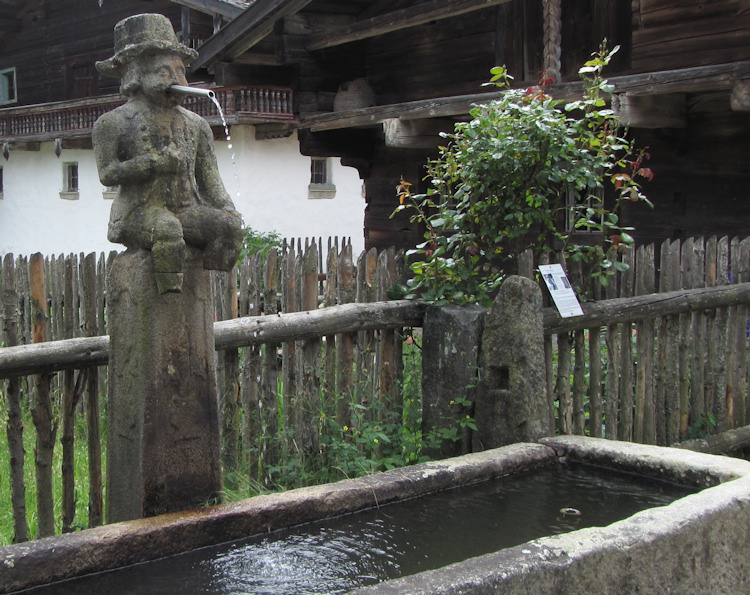
Fountain at the Museumsdorf Bayerischer Wald
The word plastic means, more or less, “pliable” or “moldable.” Plastics are so pervasive in our lives that it’s hard to remember how recent they are. The first modern plastic was only invented in the 1850’s, and it wasn’t until a hundred years later, the 1950’s, that plastics were mass produced in sufficient quantities that they began to displace the materials humanity had always used before for its household objects. A trip through this living history museum brought that civilization-changing divide into focus.
Now, people on another continent can injection-mold our dolls, water pipes, cereal bowls, and toilet seats for us. We’re surrounded by cheap, colorful plastic; if you’re indoors, it’s a pretty good bet that you can reach out and touch something plastic right now. But almost within living memory, humanity had little or no plastic to work with. They were making what they needed out of natural materials, and they often were producing those items within their own communities.
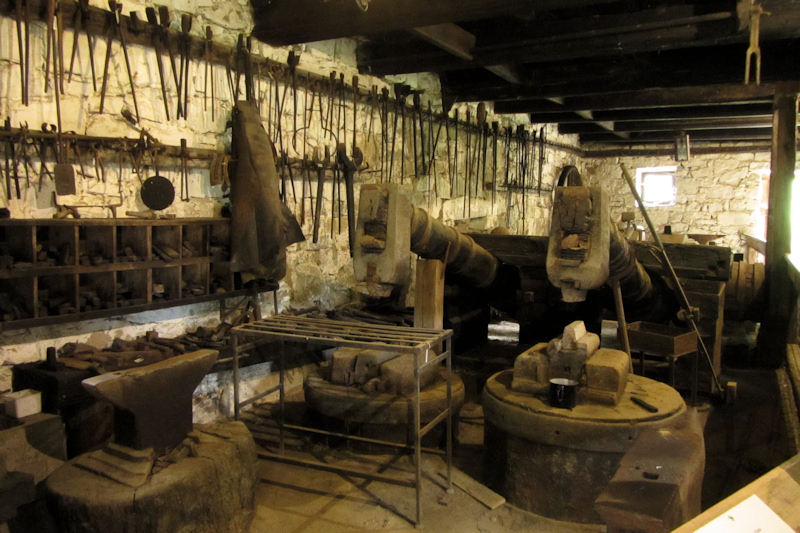
Blacksmith tools at Museumsdorf Bayerischer Wald
They made things out of metal.
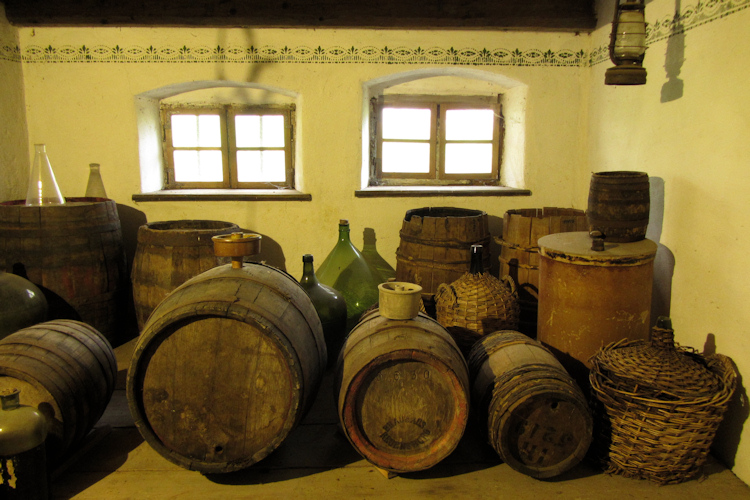
Barrels at Museumsdorf Bayerischer Wald
They made things out of wood and glass.
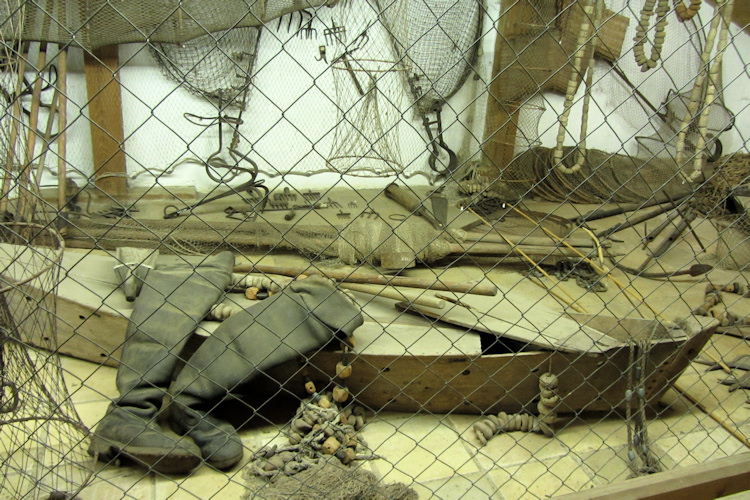
Fishing nets and gear at Museumsdorf Bayerischer Wald
They made things out of natural fibers and leather.
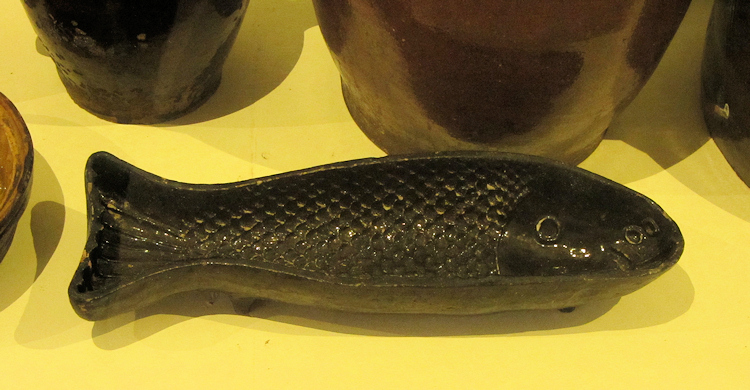
A fish-shaped pan at Museumsdorf Bayerischer Wald
And they made things out of ceramic.
Because so many of these materials were worked locally, complicated sets of tools were on display everywhere at this Bavarian museum. What we would expect to find hidden away in a factory, Bavarians of the old days might have right in their living rooms, like this cobbler, who had his workshop in his house. (I love the specially modified stool.)
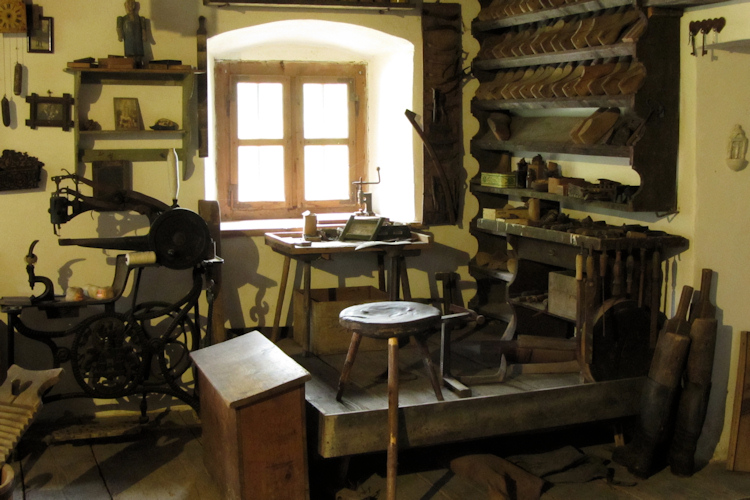
A cobbler’s workbench at Museumsdorf Bayerischer Wald
Woodworking tools were everywhere. It brought into sharp focus for me just how valuable my woodcarver, Paul, was to the village that took him in in my werewolf story, By These Ten Bones.
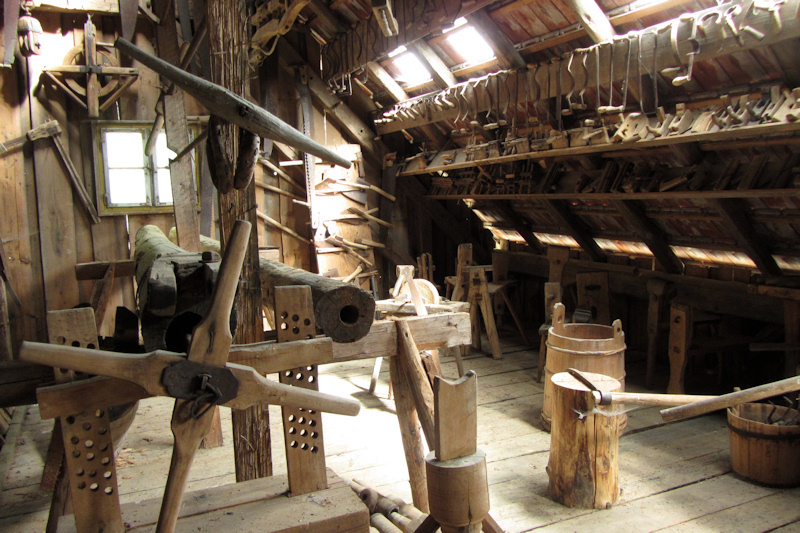
A woodworking workshop at Museumsdorf Bayerischer Wald
To read my latest blog posts, please click on the “Green and Pleasant Land” logo at the top of this page. All photos taken in June, 2014, at the Museumsdorf Bayerischer Wald, Tittling, Germany. Photos and text copyright 2014 by Clare B. Dunkle.

One of the loveliest things to do is wander through these old medieval villages and working villages in European towns. I am always ASTOUNDED with how well they turn wood (into the dishes we saw in Estonia) work metal (into the fireplace grates we saw in Scotland) and use hemp and wool and all the natural things to make what’s needed. It always makes me determined to go back and rid my house of anything mass produced. (It never works, but it’s a good determination.)
I DO love that stool as well!
I know just how you feel. I came home and blushed at how much plastic I have in my house.